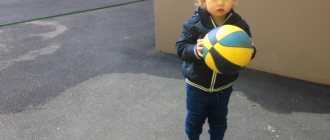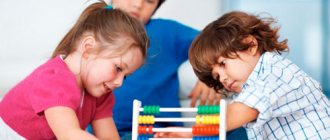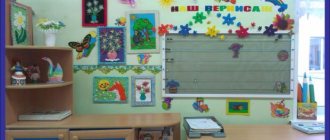Greetings to my regular readers and casual blog visitors. Tatyana Sukhikh is with you. Do you want to know what today's topic is? Yes, these are outdoor games for physical education. It will be of interest to educators, teachers, and especially to physical education instructors in preschools.
Games are a natural companion in children's lives and a source of joyful, unforgettable emotions. They have a powerful force in raising children. Children's participation in them increases the level of physical and moral development.
Literature
Using the following literature, you can find a lot of useful information about holding games in kindergartens and primary schools.
- The Uchmag website offers information on various types of physical exercises in an extended-day elementary school group.
- And here you can purchase a coupon that gives you the right to participate in a webinar about the game as a method of physical education for children.
- You can find a useful event about the features of organizing fun and games on this page.
- You can learn about the physical development of five- and seven-year-old children and physical education activities here.
- And here is the most interesting summary and here is a card index of entertainment for preschoolers.
"Sport equipment"
Age 6-7 years The set includes 8 cards depicting sports equipment - 48 pictures. For the card you need to print it twice, the second copy is cut into separate pictures. The set also includes 7 cards with a brief description of sports equipment.
Goal To familiarize children with the variety of sports equipment and its purpose. Objectives - To expand knowledge about sports equipment, its purpose, and the types of sports where sports equipment is used. — Develop long-term visual memory and attention. — Cultivate interest in physical education and sports. Before the game , review with the children all the cards depicting sports equipment. Have a conversation about what the sports equipment is called and what it is used for. There are several options for the game: Option 1 Individual game (with a teacher) The child selects a picture and overlays it on the playing field with the same pictures. After the child has found the picture, he must name the sports equipment that is depicted on it. Explain how this equipment can be used. Option 2 Collective game using the playing field and cut cards. 2-8 people + the leader play at the same time. The presenter distributes large cards to the players. The cut cards remain with the presenter. The presenter takes out one card at a time and shows it to the players; the card goes to the player who has it on the playing field, and if the player named the inventory correctly. The winner is the one who is the first to fill his playing card with cards and correctly name the sports equipment where it is used. Option 3 Collective game using only cut cards. From 2 to 8 children play at the same time. All cards are shuffled and laid out in a deck, face down. Players take turns revealing cards in a clockwise order. The player who opened the card must name the sports equipment; if the equipment is named correctly, the player takes the card for himself. If the inventory is not guessed, the card is placed face down next to the deck, and the turn passes to the next player. After playing the first deck, players play the second. The one with the most cards at the end of the game wins. Complication - the card can be picked up if the player tells where the equipment is used. Looks like that:
Here you can download the didactic game Sports equipment for color printing in PDF format
Didactic game in physical education for preschoolers paired cards
Role of the game
Physical education of children
In games, children practice a variety of movements: jumping, running, climbing, catching, throwing, climbing. Many movements help to activate breathing, blood circulation and metabolic processes. They also have a beneficial effect on mental functioning. Games played in the fresh air are more healthy. Inspiring children with games mobilizes not only their physiological reserves, but also develops the efficiency of movements.
Play is an indispensable means of improving movement. It helps develop strength, speed, endurance, and coordination of movements. Since they do not fetter the will and freedom of the little ones, children feel relaxed in them. As a result of conducting outdoor games in kindergarten classes, children develop a positive attitude towards physical education.
Mental and moral education of children
In the process of such games, ideas, thinking, memory are activated, and imagination develops. They are accompanied by poems, songs, and counting rhymes. As a result, the little ones' vocabulary is replenished.
Such games are also indispensable for the moral education of children. They act in a team and obey collective demands. Following the rules of the game teaches children to develop will, develop endurance, self-control, and control actions and behavior. Thanks to outdoor games, children begin to make friends, help, and empathize with each other. Therefore, children really enjoy physical education classes.
"Winter and summer sports"
Age 5-7 years Goal To introduce preschool children to the concept of winter and summer sports Objectives - to teach to distinguish and name winter and summer sports; - develop fine motor skills of the hands; - develop thinking, imagination, speech.
Cut and laminate a large circle. Cut out individual cards and glue them to wooden clothespins.
Before the game, a conversation is held with the children about the fact that there are winter and summer sports, using riddles to talk about the sports presented in the game ! the file contains riddles for conversation How to play The child is offered a circle with sectors marked with snowflakes and suns. The child must attach a clothespin with a picture of a winter sport to the sector with a snowflake, and a summer sport to the sector with the sun.
If you make several sets of circles and cards, children can compete. The game can also be used for physical education activities and holidays. The game can be replenished with other cards that correspond to the goals of the game. Looks like that
Here you can download the didactic game Winter and summer sports for color printing in PDF format
Didactic game
Card index for preschoolers
Let us present to your attention some entertainment that kids love to play.
| Name of the game | Target | Progress of the game |
| Sunshine and rain | 1. Teach kids to walk and run without pushing. 2. Teach them to act on the command of the teacher-instructor | The teacher says to the children: “The sun has appeared in the sky.” The guys start running around the playground. As soon as she gives the signal “It’s raining, quickly go home,” all the children run to their places. |
| Dashes | Teach kids to run correctly in a given direction and perform simple tasks at the same time. | 1. Jogging at an average pace from 90 to 180 m. 2. Jogging on a flat path with your knees raised high. 3. Step over the slats that are on the ground and run. 4. Who takes a few steps to the place. 5. Who will run the distance faster. |
| Aim better | Practice hitting the target | Draw a line on the ground. Place a basket at a distance of up to 2 m from it. The child approaches the line and throws a ball into the basket. The one who throws the most balls into the basket wins. |
I have suggested only a few of its many popular games. You can make a plan for them. Be sure to write to me if you liked the article and share it on social networks. I look forward to your feedback. Good luck!
MAGAZINE Preschooler.RF
In preschool age, the leading activity is play. For the purpose of comprehensive development and education of a child, outdoor games are widely used. Play for children is an important means of self-expression, a test of strength, and the development of physical qualities. The most important advantage of outdoor games is that, taken together, they exhaust all types of natural movements inherent to humans: walking, running, jumping, climbing, throwing, catching - and therefore are the most universal and indispensable means in the development of physical qualities.Outdoor games are an excellent means of developing and improving the basic movements of children, strengthening and hardening their body. With the help of games, the physical development of a child improves: he becomes stronger and more resilient. Movements, in turn, help the child’s lungs work, blood circulation increases, and the metabolic process improves. A group of games based on various movements best satisfies the growing body's need for active actions. In outdoor games, children catch up with someone or run away from the driver. They don’t just run and jump, but depict some kind of animals. During the game, they train and strengthen certain muscle groups.
The role of outdoor games in raising a child In pedagogy, outdoor games are widely used, in which, in addition to the basic movements, others are used, for example, rhythmic clapping, stamping, etc. When conducting them, the teacher can pursue different goals depending on the stage of physical development. children. Outdoor play is a natural companion in a child’s life, a source of joyful emotions that has great power. With the help of outdoor games, you can solve various problems of moral, mental and of course physical education
Running games
Card 1
Mousetrap . The players are divided into 2 groups of unequal composition. The smaller group holds hands and forms a circle. They represent a mousetrap. The remaining children (mice) are outside the circle. Those depicting a mousetrap begin to walk in a circle, saying:
Oh, how tired the mice are, They gnawed everything, ate everything,
Beware, cheats, we will get to you.
Let's set up mousetraps. Let's catch everyone now!
Children stop and raise their hands up, forming a gate. Mice run in and out of the mousetrap. At the teacher’s “clap” signal, the children standing in a circle lower their hands, squat - the mousetrap slams shut. Mice that did not have time to run out of the circle (mouse trap) are considered caught. Those caught stand in a circle, the mousetrap increases. When most of the children are caught, the children change roles and the game resumes. The game is repeated 4 - 5 times.
Directions. After the mousetrap has slammed shut, mice should not crawl under the hands of those standing in a circle or try to break the clasped hands. The most dexterous children who have never fallen into a mousetrap should be noted
| Card 2 We are funny guys . Children stand on one side of the playground outside the line. A line was also drawn on the opposite side of the site. To the side of the children, approximately halfway between the two lines, there is a trap. The trap is assigned by the teacher or chosen by the children. The children say in chorus: We are funny guys We love to run and jump. Well, try to catch up with us. One, two, three - catch it! After the word “catch,” the children run to the other side of the playground, and the trap catches up with the runners and catches them. The one whom the trap manages to touch before the runner crosses the line is considered caught. He steps aside. After 2-3 runs, the caught ones are counted and a new trap is selected. The game is repeated 4-5 times. Directions. If after 2-3 runs the trap does not catch anyone, a new trap is still selected. |
| Card 3 Traps. Children are located randomly on the playground. The leader - the catcher, appointed by the teacher or chosen by the players, stands in the middle of the court. The teacher says: “One, two, three - catch it!” At this signal, all the children scatter around the playground, dodging the trap, which is trying to catch up with one of the players and touch him with his hand (stain). The one whom the trap touched with his hand moves aside. The game ends when the trap catches 3-4 players. A new trap is then selected. The game is repeated 4-5 times. Directions. In order for children to better navigate, you can give the trap some kind of distinctive sign - tie a ribbon on your hand, pin a bow, put on a hat with a plume, etc. If the trap turns out to be awkward and cannot catch anyone for a long time, the teacher stops the game and assigns another driver. |
| Card 4 Carousel. Children form a circle, holding on to a cord whose ends are tied. They take the cord with their right hand and walk in a circle, first slowly, then faster, and in the end they run. Movements are performed in accordance with the text spoken aloud: Barely, barely, barely, barely The carousels were spinning, And then around, around, all running, running, running. While running, the teacher says: “Be-zha-li, be-zha-li.” After the children run in a circle 2-3 times, the teacher gives a signal to change the direction of movement, saying: “Turn.” The players turn in a circle , quickly grab the cord in their left hand and run in the other direction. Then the teacher says with the children: Hush, hush, don't rush! Stop the carousel! One, two, one, two, The game is over! The movement of the carousel gradually slows down. At the words “The game is over,” the children lower the cord to the ground and disperse around the playground. After the children have rested a little, the teacher will give a signal (bell, whistle, clapping, hitting a tambourine), according to which the players again stand in a circle, take hold of the cord, i.e., take their places on the carousel. The game is resumed and repeated 3-4 times. Directions. The teacher can instruct the children, using conventional signals, to quickly stand in a circle when repeating the game. A player who does not have time to take a seat before the third signal does not take part in the next ride on the carousel, but waits for the next boarding. |
| < Previous | Next > |
"Let's help Dunno"
Age 5-7 years Material - 5 cards with a playing field and 25 cut cards with images of sports equipment. Goal To develop attention, the ability to recognize and name sports equipment and sports. Number of players from 1 to 5. Motivation - to help Dunno find sports equipment. Progress of the game All players receive a conditional number of cards (they choose from the general pile). A presenter is identified, who takes cut cards from an opaque bag and voices what is indicated in the picture. The player whose pictures match takes it for himself and puts it on the card. The one whose cards are completely closed wins. Looks like that:
Here you can download the didactic game sports lotto Let's Help Dunno for color printing in PDF format
Didactic game on physical education for preschoolers
"The fifth wheel"
Age 5-7 years The goal is to know and name sports equipment, to develop the ability to classify objects according to essential characteristics. Didactic material: a set of 10 cards, on each card there are 3 stripes depicting 5 items, 4 items are sports equipment, and 5 are extra. Each extra item in the strip belongs to a certain category (toys, fruits, vegetables, food, household appliances, furniture, kitchen utensils, interior items, hats) Progress of the game: Children name sports equipment, identify the extra picture, explaining their choice, name a generalization the concept of “extra” images. For example: 1 card: - basketball, volleyball, soccer ball, rubber ball - sports equipment, pyramid - toy, which means it is extra; - a puck, a baseball, a shuttlecock, a tennis ball - sports equipment, a drum - a toy, which means it is superfluous; - a baseball bat, a hockey stick, a tennis racket, a gymnastic stick - sports equipment, a truck - a toy, which means it is superfluous; Extra pictures are toys (general concept) It looks like this:
Download the didactic game The fifth odd one for color printing in PDF format
Didactic game cut pictures







